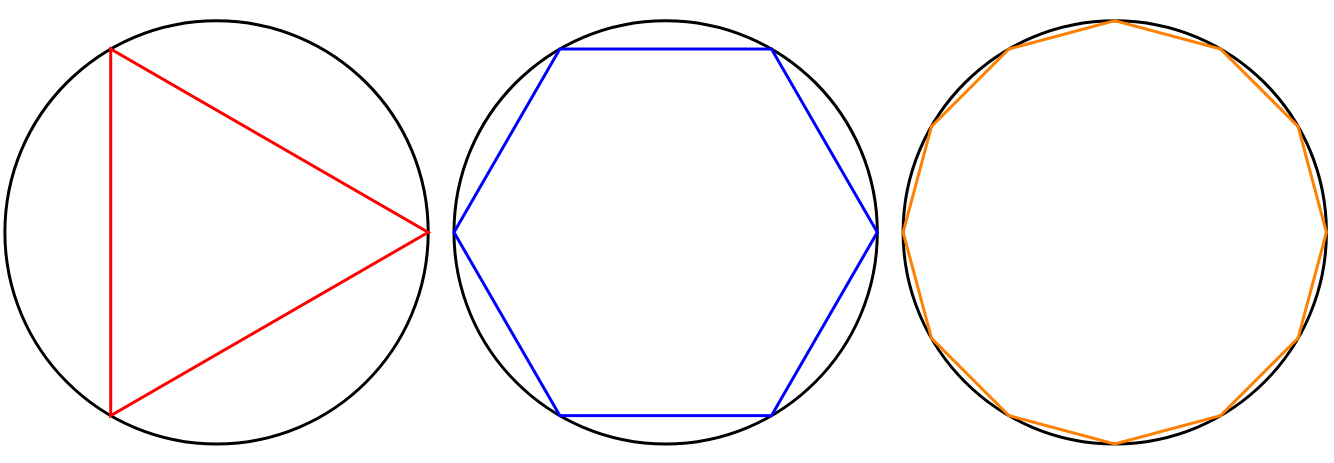March 18, 2025 (Updated on: March 18, 2025)
Convergence of the perimeter of an inscribed regular polygon

If you draw a triangle inside a circle, its perimeter is much shorter than the circle’s circumference. But as you add more sides, the polygon starts hugging the circle. Intuitively, with infinitely many sides, its perimeter should match the circle’s circumference, isn't it ? Well, let’s prove it.
Consider a -sided regular polygon inscribed in a circle of radius . The summits of the polygon lie on the circle, and all sides of the polygon are of equal length.
The angle at the center of a regular polygon is the angle formed by two consecutive rays of the circle passing through the vertices of the polygon. Since the polygon is regular, all these angles at the center are equal.
- Full circle circumference : The complete circumference of a circle is radians.
- Number of sides: The polygon has sides.
- Circumference division: Each side of the polygon subtends an angle at the center that is a fraction of the total circumference. Since the polygon has sides, the circumference is divided into equal parts.
Therefore, the centrale angle subtended by a side of the polygon is :
Example : For (hexagon), each side subtends an angle at the center of :
Thanks to the inscribed angle theorem , we know that :
Let’s take the isosceles triangle where :
- is the center of the circle.
- and are two consecutive vertices of the polygon.
- and are the radii of the circle, each of length .
- is a side of the polygon, of length .
We have proved that :
- The centrale angle
- And that every angle at the base et is
To find the length of side , we can use trigonometry in the triangle ; the definition of sine is :
And as :
- The hypotenuse is the radius , which is .
- The opposite side is half the side , which is .
Then we have :
Thus, the length of a side of the regular polygon inscribed in a circle of radius is given by :
We now have all we need to demonstrate the value of the perimeter of a polygon.
The perimeter of the polygon is the sum of the lengths of all its sides. Since the polygon has sides, each of length , the perimeter is :
The basic question was to find out the value of the perimeter of the inscribed regular polygon when the number of its sides tends towards infinity.
We know that for small angles and when is very large, is small. We can therefore use this approximation :
Substituting this approximation into the perimeter expression, we obtain :
Thus, when tends to infinity, the perimeter of the regular polygon inscribed in the circle tends to , which is the circumference of the circle: